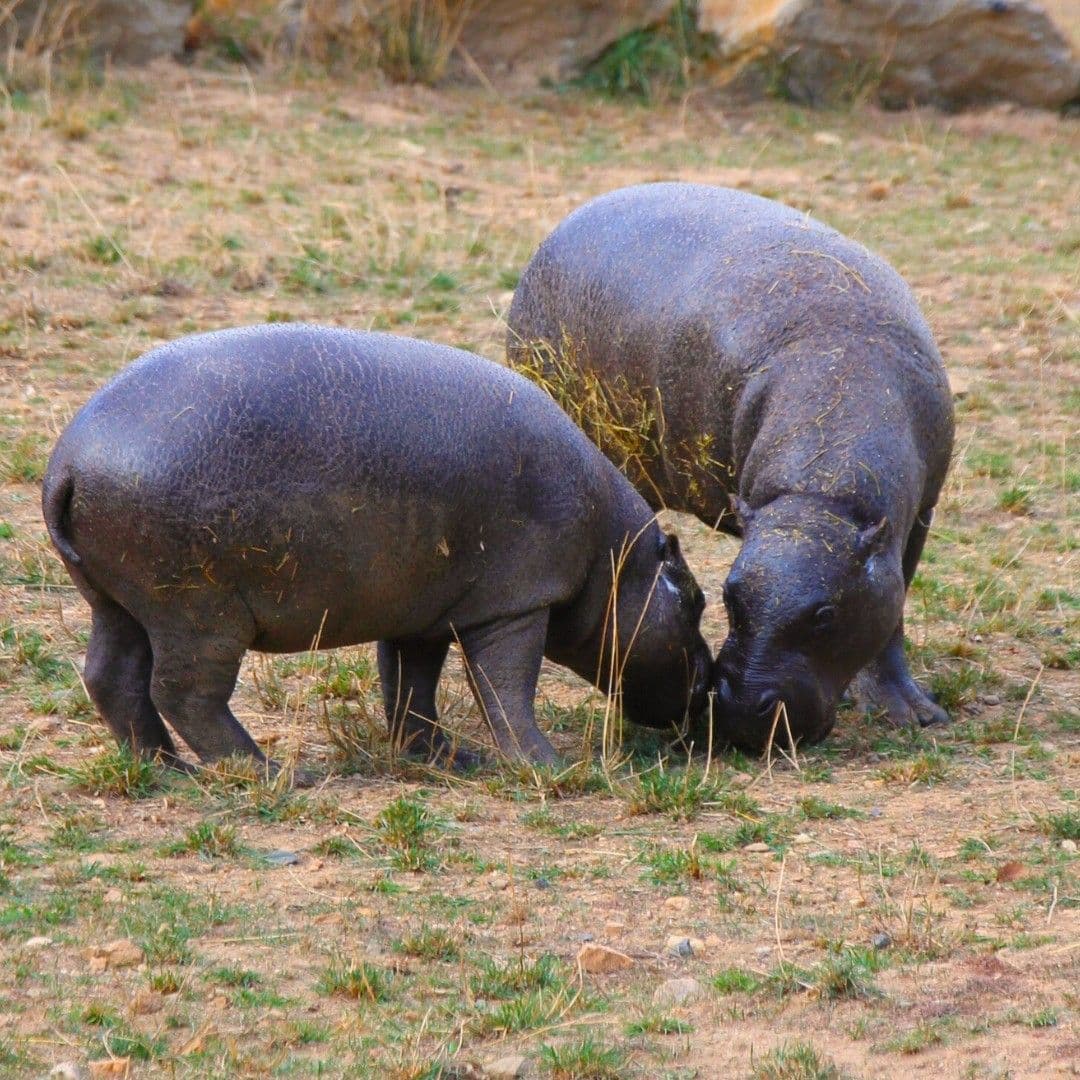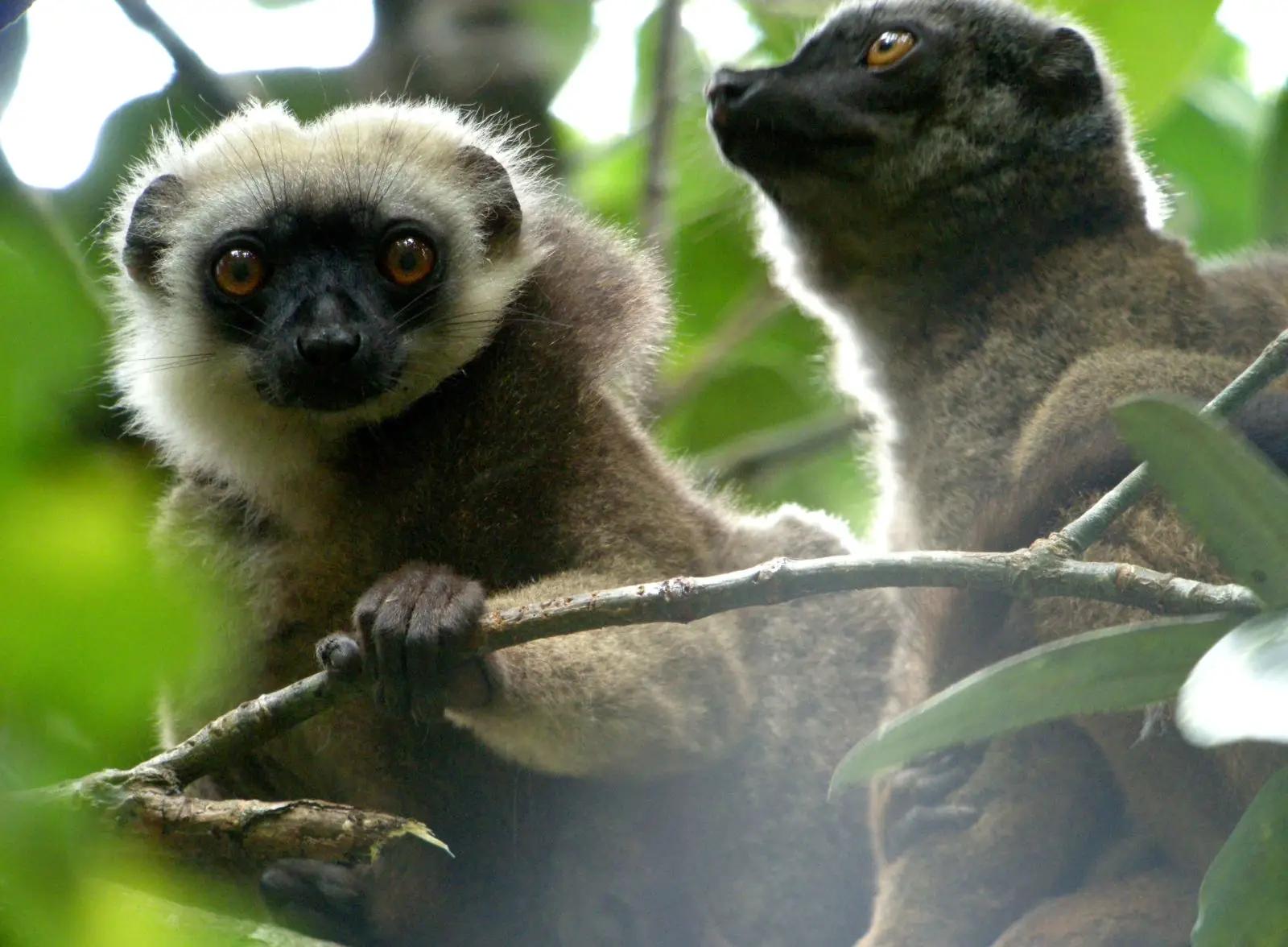Parc Animalier d'Auvergne, France
Cohabitation of female Pygmy hippos
An innovative study to facilitate captive management

Project objective
As part of an endangered species conservation programme, Auvergne Animal Park welcomed two young female pygmy hippos (Choeropsis liberiensis). For several years, these animals have been hosted in parks that are members of EAZA (European Association of Zoos and Aquaria), contributing to the conservation programmes for this species.
In order to better manage the captive population, the creation of same-sex groups is being considered. The objective here is to introduce two unrelated young females to form a pair : this is a first within European zoological parks.
Description
The pygmy hippo, less well-known than the common hippopotamus, is nevertheless highly endangered in the wild (Flacke et al., 2015; Ramson et al., 2015). In the wild, female common hippos are known to form small groups (Blowers et al., 2010). In contrast, much less is known about the pygmy hippo due to its elusive nature and nocturnal activity (Von Houwald et al., 2020).
In order to make informed decisions during the gradual introduction of the animals, Auvergne Animal Park chose to conduct behavioural monitoring. This monitoring then aimed to document the development of the relationship between the two females, providing detailed information to the ex-situ breeding programme.
The development of the observation protocol and data analysis were supervised by our research office. The hippos were monitored for 2 months after their arrival at the park (spring 2023), followed by 4 months of observation starting from their introduction (autumn 2023).
Results
The identified warning signs and factors contributing to the success of this introduction were documented. More than a year after their introduction, the two females are still cohabiting peacefully.
However, the females are still young and have not yet reached sexual maturity. It is thus too early to determine whether group management of female pygmy hippos is a viable long-term solution.
Further monitoring is planned to observe the long-term development of their behaviours and cohabitation.
Animal welfare engagement
The pygmy hippo is one of the species with a skewed sex ratio in favour of females (Saragusty et al., 2012; Zschokke, 2022), which currently poses a challenge in managing the captive population. The ability to house females together—while ensuring their welfare—is crucial for facilitating population management. This is a first within the European zoological community, and the aim is to assist other zoos that wish to participate in this programme.
Sharing these results will help other zoos accommodate females and experience feedback will enhance the chances of success for these cohabitations.
Bibliographic references
Blowers, T.E., Waterman, J.M., Kuhar, C.W., & Bettinger, T.L. (2010). Social behaviors within a group of captive female Hippopotamus amphibius. Journal of Ethology, 28(2), 287–294. https://doi.org/10.1007/s10164-009-0184-6
Flacke, G. L., Chambers, B. K., Martin, G. B., & Paris, M. C. J. (2015). The Pygmy Hippopotamus Choeropsis liberiensis (Morton, 1849): Bringing to Light Research Priorities for the Largely Forgotten, Smaller Hippo Species. Der Zoologische Garten, 84(5), 234–265. https://doi.org/10.1016/j.zoolgart.2015.07.006
Ransom, C, Robinson, P.T. & Collen, B. 2015. Choeropsis liberiensis. The IUCN Red List of Threatened Species 2015: e.T10032A18567171. https://dx.doi.org/10.2305/IUCN.UK.2015-2.RLTS.T10032A18567171.en. Accessed on 29 August 2024.
Saragusty, J., Hermes, R., Hofer, H., Bouts, T., Göritz,F., & Hildebrandt, T.B. (2012). Malepygmy hippopotamus influence offspring sex ratio. Nature Communications, 3(1), 697. https://doi.org/10.1038/ncomms1700
Von Houwald, F., Wenker, C., Flacke, G., Steck, B., Osterballe, R., Viduna, R., and Matthews, A. 2020. EAZA Best Practice Guidelines for the Pygmy Hippopotamus (Choeropsis liberiensis). First edition. European Association of Zoos and Aquaria, Amsterdam, The Netherlands.
Zschokke, S. (2002). Distorted Sex Ratio at Birth in the Captive Pygmy Hippopotamus, Hexaprotodon Liberiensis. Journal of Mammalogy, 83(3),674–681. https://doi.org/10.1644/1545-1542(2002)083<0674:DSRABI>2.0.CO;2
Learn more about our solutions
- Implementation
Discover how to effectively deploy our EBEA program in your institution.
- Methodology
Discover our unique approach to animal welfare, based on years of research and innovation.
- Animals
Discover the species we monitor and the specific programmes available for each.
Examples of research projects
Discover some of our interventions and achievements as part of the Evidence-Based Ethology & Animal Welfare (EBEA) programme.
The research are carried out in zoos or laboratories. Data can be collected by our team and/or the institution's team, or through the placement of an intern (Master 1, Master 2, gap year, post-master).

Conures - tamarins: a mixed species exhibit
Parc de Clères et Ménagerie du Jardin des Plantes, France
Developing multi-species enclosures while ensuring the well-being of all animals.
Learn more
Making feeding more complex for tigers in captivity
Beekse Bergen, Netherlands
Using stimulating feeding devices for tigers to promote physical exercise and their well-being
Learn more
Dietary transition: towards a fruit-free diet for great apes
La Palmyre, France
What impact on social relationships and microbiota in great apes? Behavioural and microbiotic effects of dietary change
Learn more
Contact introduction for White-fronted lemurs
Poitiers, France
Reducing animal isolation through cooperation between zoos
Learn more